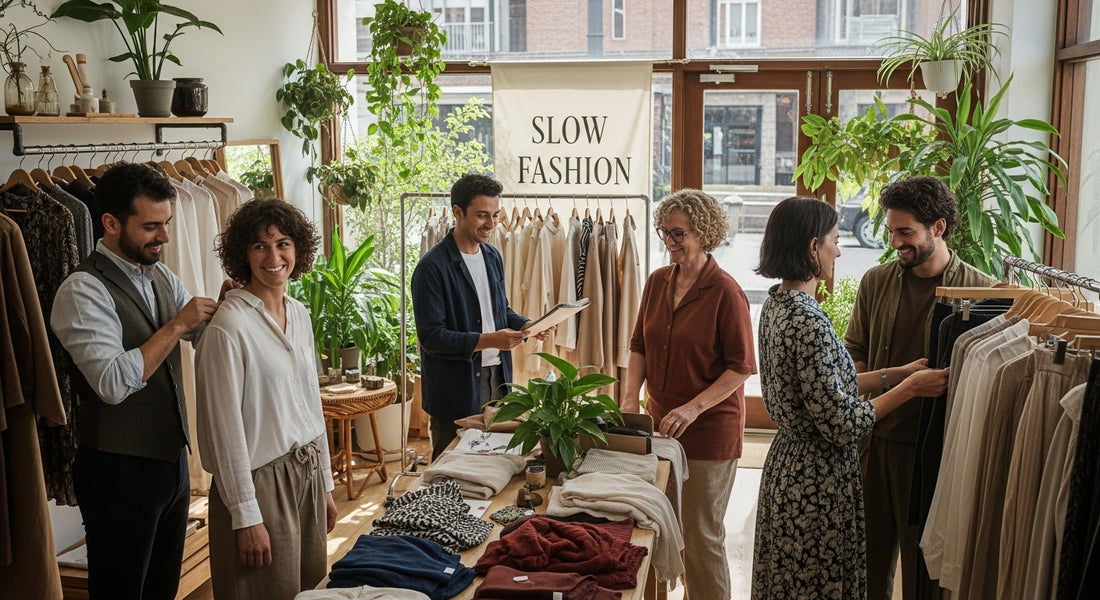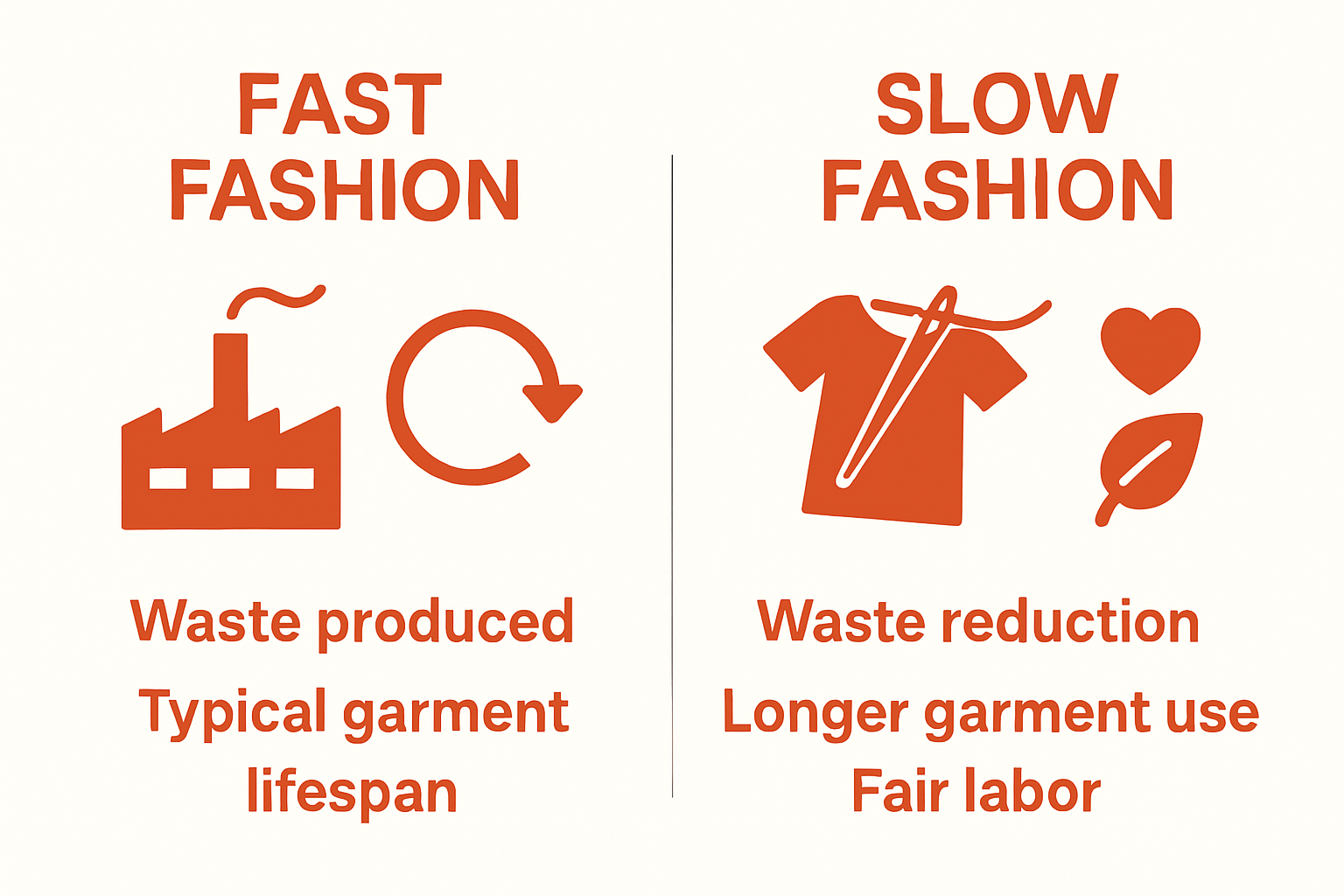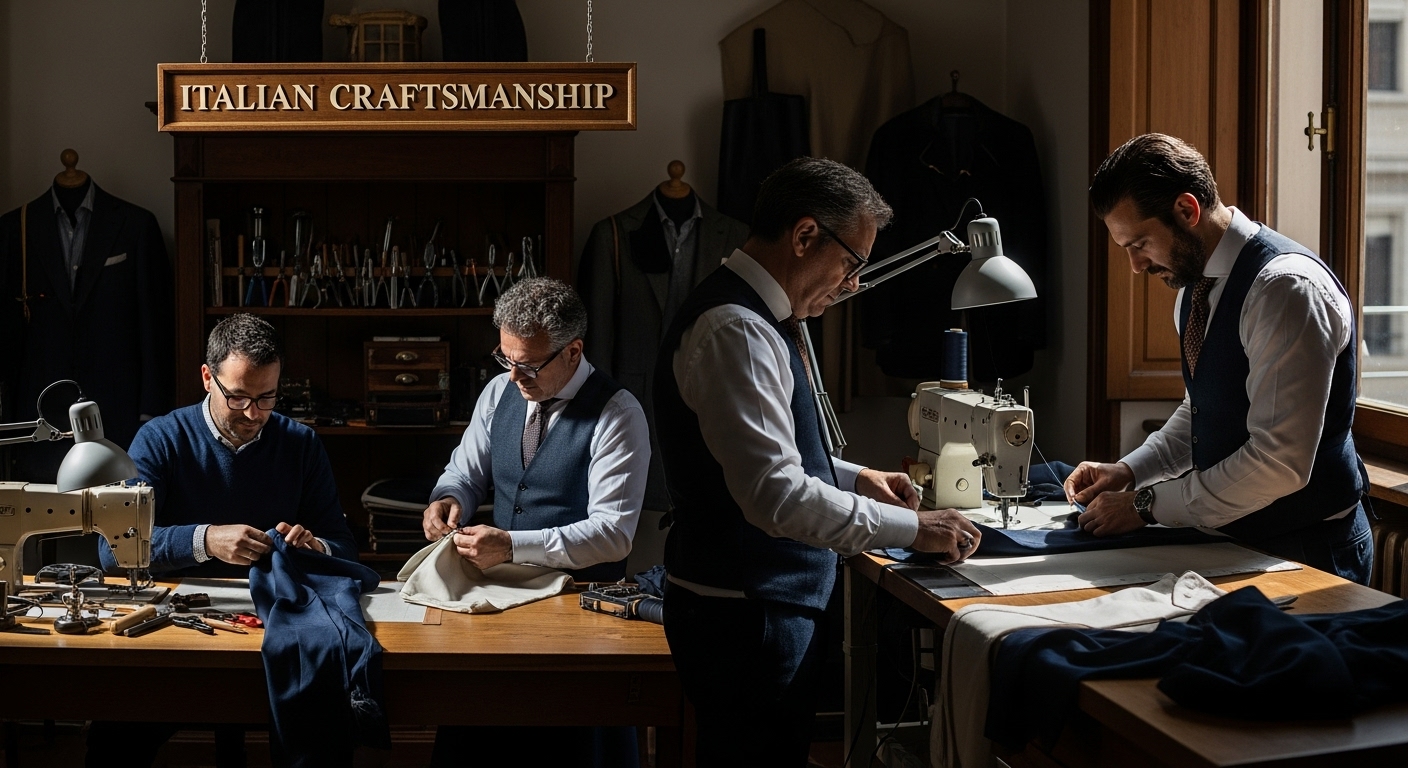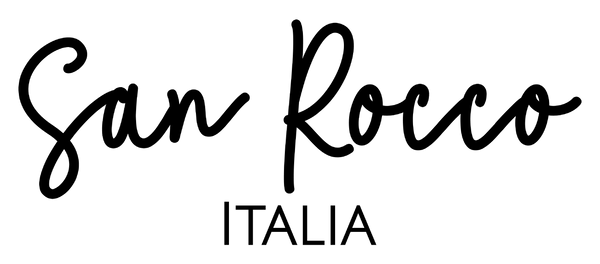
What is Slow Fashion? Understanding its Meaning and Impact
Share
Most people think fashion is all about chasing the next big trend and filling wardrobes with endless new looks. Yet the average consumer now buys around sixty clothing items a year, with heaps of them ending up in landfills. Slow fashion flips that script completely. Instead of fast cycles and disposable outfits, it celebrates lasting quality, fair labour, and mindful design. What if your clothes could actually outlive the trend and hold real meaning?
Table of Contents
- Defining Slow Fashion: Key Principles And Values
- The Importance Of Slow Fashion In Today’s World
- How Slow Fashion Works: Production To Consumption
- Understanding The Impact Of Slow Fashion On The Environment
- Exploring Italian Craftsmanship And Its Role In Slow Fashion
Quick Summary
| Takeaway | Explanation |
|---|---|
| Slow fashion prioritises quality and durability. | This approach values long-lasting garments over fast fashion’s disposable model, ensuring better value and less waste. |
| Ethical production ensures fair wages and safe conditions. | It demands transparency and fair treatment for all workers involved in creating fashion, challenging exploitative practices. |
| Sustainable materials reduce environmental impact. | Using organic cotton and recycled textiles minimizes ecological damage, aligning clothing production with environmental sustainability principles. |
| Mindful consumption transforms clothing into investments. | Consumers are encouraged to buy fewer, higher-quality items that support sustainability and foster a more responsible relationship with fashion. |
| Italian craftsmanship exemplifies slow fashion’s core values. | It combines traditional artisanal skills with modern ethics, producing unique, high-quality garments while preserving cultural heritage. |
Defining Slow Fashion: Key Principles and Values
Slow fashion represents a holistic approach to clothing production and consumption that prioritises sustainability, ethical practices, and timeless design over rapid trend cycles and mass manufacturing. Unlike fast fashion’s disposable model, slow fashion champions quality, durability, and responsible creation.
The Core Philosophy of Conscious Fashion
At its heart, slow fashion challenges the traditional fashion industry’s relentless pursuit of constant production and consumption. According to a sustainability study in the Journal of Sustainable Fashion, the movement emerged as a direct response to the environmental and social consequences of fast fashion’s unsustainable practices.
The fundamental principles of slow fashion include:
- Prioritising high-quality, long-lasting garments
- Valuing artisan craftsmanship and traditional manufacturing techniques
- Reducing textile waste through mindful production
- Ensuring fair wages and safe working conditions for all workers
- Utilising environmentally responsible materials and production methods
Ethical Production and Material Considerations
Ethical production sits at the core of slow fashion’s philosophy. Research from the University of Helsinki reveals that slow fashion designers meticulously consider every aspect of garment creation, from material sourcing to final production. This approach means selecting sustainable fabrics like organic cotton, recycled textiles, and responsibly sourced natural materials that minimise environmental impact.
By rejecting the disposable fashion model, slow fashion encourages consumers to view clothing as an investment. Each piece is designed with longevity in mind, featuring timeless styles that transcend seasonal trends and maintain aesthetic and functional quality over extended periods.
Ultimately, slow fashion represents more than a clothing strategy it is a comprehensive philosophy that reimagines our relationship with fashion, emphasising respect for human labour, environmental sustainability, and mindful consumption.
The Importance of Slow Fashion in Today’s World
In an era of escalating environmental challenges and growing social consciousness, slow fashion emerges as a critical response to the fashion industry’s unsustainable practices. This approach goes beyond mere clothing choices, representing a profound shift in how we perceive consumption, production, and our relationship with material goods.
Environmental Sustainability and Resource Conservation
According to the European Environment Agency, the textile industry is responsible for significant environmental degradation. Slow fashion addresses these challenges by promoting sustainable practices that dramatically reduce the industry’s ecological footprint.
Key environmental benefits include:
- Minimising textile waste and landfill contributions
- Reducing water consumption in garment production
- Decreasing carbon emissions through localised manufacturing
- Supporting circular economy principles
- Protecting biodiversity by limiting harmful industrial processes
Economic and Social Impact of Mindful Fashion
Beyond environmental considerations, slow fashion creates meaningful economic and social transformations. By prioritising quality over quantity, the movement supports local artisans, preserves traditional craftsmanship, and challenges the exploitative labour practices prevalent in fast fashion.
The economic model of slow fashion emphasises:
- Fair compensation for skilled workers
- Investment in long-lasting, high-quality garments
- Supporting small-scale, ethical manufacturers
- Creating transparent and accountable supply chains
- Encouraging responsible consumer behaviour
By challenging the disposable fashion paradigm, slow fashion offers a sustainable alternative that respects both human labour and environmental limitations. It represents a holistic approach to clothing that values quality, durability, and ethical production over temporary trends and mass consumption.
The table below compares the fundamental differences between slow fashion and fast fashion, highlighting their core philosophies, production methods, and impacts.
| Aspect | Slow Fashion | Fast Fashion |
|---|---|---|
| Production Pace | Slow, intentional | Rapid, continually changing |
| Design Philosophy | Timeless, classic, durable | Trend-driven, disposable, short-lived |
| Material Selection | Sustainable, high-quality, environmentally responsible | Cheap, synthetic, often environmentally damaging |
| Labour Conditions | Ethical, fair wages, safe environments | Often exploitative, low wages, unsafe conditions |
| Environmental Impact | Minimised waste, supports circular economy | High waste, heavy resource consumption |
| Consumer Approach | Buy less, invest in lasting pieces | Buy more, encourage frequent replacements |
| Supply Chain Transparency | Transparent, traceable | Opaque, difficult to trace |
How Slow Fashion Works: Production to Consumption
Slow fashion operates as a comprehensive system that transforms traditional clothing production and consumption patterns, emphasising intentional design, ethical manufacturing, and responsible consumer engagement.
This approach reimagines fashion as a holistic process that prioritises quality, sustainability, and social responsibility throughout its entire lifecycle.
Design and Material Selection
Research from the Sustainable Marketing Initiative highlights that slow fashion begins with meticulous design processes that challenge conventional fashion industry approaches. Designers focus on creating timeless, versatile pieces that transcend seasonal trends, selecting materials with careful consideration of their environmental and social impact.
Key considerations in slow fashion design include:
- Selecting sustainable, durable materials
- Creating versatile, classic designs
- Minimising waste during pattern cutting
- Prioritising garment longevity
- Ensuring potential for repair and adaptation
Manufacturing and Supply Chain Ethics
Manufacturing in slow fashion represents a radical departure from mass production models. The process emphasises small-scale, localised production with transparent supply chains that prioritise worker welfare and environmental sustainability. Artisan skills are valued, with manufacturers often working in smaller workshops that maintain traditional craftsmanship techniques.
Ethical manufacturing principles include:
- Ensuring fair wages and safe working conditions
- Using localised production methods
- Supporting traditional craftsmanship
- Minimising carbon footprint through reduced transportation
- Creating traceable production processes
Consumers play a crucial role in the slow fashion ecosystem by making intentional purchasing decisions. This means investing in high-quality pieces, understanding garment origins, and viewing clothing as a long-term investment rather than a disposable commodity. By choosing slow fashion, individuals become active participants in a more sustainable and responsible fashion system that values human dignity and environmental preservation.
Understanding the Impact of Slow Fashion on the Environment
Slow fashion represents a transformative approach to addressing the substantial environmental challenges posed by the traditional fashion industry. By reimagining clothing production and consumption, this movement offers a comprehensive strategy for reducing ecological harm and promoting sustainable practices.
Reducing Resource Consumption and Waste
According to research from the Zurich University of Applied Sciences, the environmental impact of fast fashion is staggering. The typical consumer purchases approximately sixty clothing items annually, with a significant portion ultimately discarded in landfills. Slow fashion directly confronts this wasteful model by introducing more sustainable alternatives.
Key environmental benefits of slow fashion include:
- Significantly reducing textile waste
- Minimising water consumption in production
- Decreasing carbon emissions through localised manufacturing
- Promoting longer garment lifecycles
- Supporting biodiversity by limiting harmful industrial processes
Material Selection and Circular Economy Principles
The environmental impact of slow fashion extends far beyond waste reduction. By prioritising high-quality, durable materials and designing for longevity, the movement challenges the disposable culture prevalent in contemporary fashion. Designers carefully select sustainable fabrics, emphasising recyclable and biodegradable materials that have minimal environmental footprint.
Circular economy principles embedded in slow fashion promote:
- Designing products for extended use
- Creating opportunities for repair and upcycling
- Using renewable and recycled materials
- Minimising chemical treatments in textile production
- Developing closed-loop manufacturing systems
Ultimately, slow fashion offers a holistic environmental strategy that goes beyond incremental improvements. By fundamentally reimagining our relationship with clothing, this approach provides a meaningful pathway to reducing the fashion industry’s ecological impact, demonstrating that style and sustainability can coexist harmoniously.

Exploring Italian Craftsmanship and its Role in Slow Fashion
Italian craftsmanship represents a pinnacle of slow fashion principles, embodying generations of artisanal expertise, precision, and dedication to quality that transcends mere clothing production. This tradition transforms fashion from a mass-produced commodity into a deeply personal, culturally rich art form that celebrates human skill and creativity.
The Heritage of Italian Artisanal Excellence
According to research on Italian apparel companies, Italian craftsmanship is not simply a manufacturing approach but a comprehensive philosophy of production that prioritises quality, sustainability, and cultural preservation. Traditional techniques passed through generations form the foundation of this remarkable approach to fashion creation.
Key characteristics of Italian craftsmanship include:
- Meticulous attention to detail
- Generations of specialised skill transmission
- Commitment to handmade production techniques
- Use of premium, locally sourced materials
- Emphasis on individual artisan expertise
Balancing Tradition and Innovation
Modern Italian craftsmanship represents a dynamic intersection between historical techniques and contemporary sustainable practices. Artisans are not merely preserving traditional methods but actively adapting them to meet current ethical and environmental standards. This approach ensures that slow fashion remains relevant, progressive, and responsive to changing global demands.
Innovative aspects of contemporary Italian craftsmanship involve:
- Integrating sustainable material technologies
- Developing circular economy production models
- Preserving traditional skills while embracing digital design
- Creating transparent, traceable supply chains
- Supporting local economic ecosystems
Italian craftsmanship in slow fashion transcends aesthetic beauty, representing a profound commitment to human creativity, environmental responsibility, and cultural heritage. By valuing each garment as a unique expression of skill and tradition, these artisans demonstrate that true luxury lies not in mass production, but in thoughtful, intentional creation.
This table outlines the key characteristics and practices that define Italian craftsmanship within the slow fashion movement.
| Characteristic | Description |
|---|---|
| Attention to Detail | Exceptional focus on precision and finishing |
| Generational Skill Transmission | Techniques passed down through generations |
| Handmade Production Techniques | Emphasis on handcrafting over mechanised manufacturing |
| Use of Premium, Local Materials | Sourcing high-quality, local materials for garment creation |
| Integration of Sustainability | Adoption of eco-friendly methods and materials |
| Support for Local Economic Ecosystems | Promoting regional production and artisan communities |
| Transparent and Traceable Supply Chains | Ensuring full visibility into all production stages |

Take the Next Step Towards Mindful, Lasting Style
If you are looking to escape the cycle of disposable fashion and invest in quality that truly lasts, discover the real value of slow fashion. This article highlighted the importance of careful material selection, respecting artisan craft, and favouring ethical production. Many shoppers today want garments and accessories that are not only beautiful but also meaningful. San Rocco Italia addresses these needs by offering a curated collection of luxury handbags and accessories, all made with respect for tradition, sustainability, and enduring elegance.

Explore the difference now by visiting San Rocco Italia. Experience the artistry of skilled Italian makers, feel the quality of full-grain leather, and treat yourself to timeless pieces designed to last for years. Make a conscious choice for your wardrobe and support the values of slow fashion today.
Frequently Asked Questions
What is slow fashion?
Slow fashion is a holistic approach to clothing production and consumption that prioritises sustainability, ethical practices, and timeless design over fast fashion practices. It promotes quality and durability while advocating for responsible creation.
How does slow fashion benefit the environment?
Slow fashion reduces the ecological footprint of the textile industry by minimising textile waste, decreasing water consumption, and lowering carbon emissions through localised manufacturing. It emphasises the use of sustainable materials and supports circular economy principles.
What are the key principles of slow fashion?
The key principles of slow fashion include prioritising high-quality, long-lasting garments, valuing artisan craftsmanship, reducing waste, ensuring fair wages, and using environmentally responsible materials in production.
How can consumers participate in the slow fashion movement?
Consumers can participate in the slow fashion movement by making intentional purchasing decisions, investing in high-quality pieces, understanding the origins of their garments, and viewing clothing as a long-term investment rather than a disposable commodity.
Recommended
- What is vegetable-tanned Tuscan leather and what makes it so special? – San Rocco Italia
- The Impact of Italian Leather Bags on Sustainable Fashion – San Rocco Italia
- Decoding Elegance: What to Look for When Buying Italian Leather Bags – San Rocco Italia
- What is Ethical Fashion? Understanding Sustainable Style – San Rocco Italia


